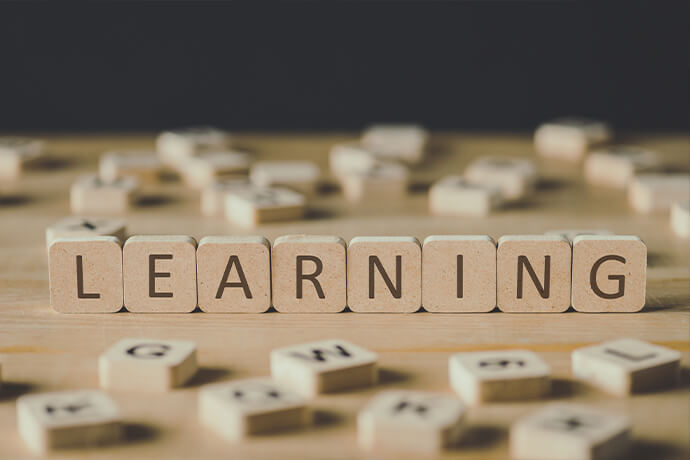 SPEAKERS
SPEAKERS
Understanding the diverse ways people learn, influenced by brain wiring, cognitive preferences, and environmental factors. Identifying learning styles aids educators in delivering tailored instruction.

We all probably know someone who understands concepts best through reading. Others learn best through listening, watching, or experiencing events. The preference for these various types of learning styles dates back to brain wiring.
For example, your brain may be more prone to process visual information, which makes you a visual learner. Cognitive preferences and environmental factors are other reasons we have numerous types of learning. It is important to understand how learning takes place and the process of information. It helps educators pinpoint their students’ strong points and use them to pass information.
But how many types of learning styles are there? And do you know where you fall? Knowing the types helps you fully harness information understanding and storing. Once you identify your learning style, you can use the most effective methods for absorbing new knowledge.
Let’s help you understand that.
Remember the elementary science class you were once in? Did you take notes, draw diagrams, or actively ask and answer questions? Or did you volunteer to be part of the experiment to remember it? These recollections map out the beginning of your predominant learning style.Interestingly, you may be a pro at two or more styles. But, knowing your stronghold allows you to adapt your learning strategies for optimal results.
Common Types of Learning Styles
There are four different types of learning, and we’ll look at them in detail in this section. The concept we’ll concentrate on is the VARK model. VARK is an acronym for:
Now, look into these learning models and how to harness the learning style fully.
Also known as spatial learning, this type relies on visually presented materials. If you are a visual learner, you use your eyesight to learn. You shine at interpreting images, charts, diagrams, and mind maps. You may also have impeccable drawing skills because you remember the nooks and crannies of everything you see.
The best material for a spatial learner is whiteboards, colorful illustrations, pictures, diagrams, and multimedia presentations.
Watching educational videos and using flashcards with keywords are also robust learning techniques for visual learners.
Many refer to this group of learners as having a photographic memory. They remember how the images appear on the page or board.
Music, audiobooks, and spoken word are an auditory learner’s forte. Auria learner’s predominant learning sense is hearing. This is how an auditory learner best understands and retains information.
Suppose you fall into this category of learners; you may be active in group discussions and presentations. You may sometimes create songs or melodies to remember the lessons. You may also record the lectures to replay them later for revising.
Listening to podcasts and audiobooks is another way this type of learning shines.
This learning style predominantly relies on sight — what you see, read, or write to remember. A learner in this category is called a verbal learner, and one excels through text.
If you are a read/write learner, you enjoy reading textbooks, articles, and magazines. Consequently, you love taking detailed notes for remembrance.
During lectures, you may be the student who takes notes, participates in online forums, and is successful in assignments and essays.
This is learning by doing. In a science class, if you are a kinesthetic learner, you often want to volunteer and be part of the experiment. These are also called tactile learners or doers. A Tactile learner mainly uses their touch sense. You will find simulations and role-playing exercises entertaining, and restricted movement limits you.
Building models and physically presenting experiments may be your strongholds. Moving around and exercising may also help you.
While VARK encompasses the significant types of learning styles, there are some other types:
Logical learners are analytical thinkers. A logical learner relies on logic based on systems, patterns, and statistics. If you are a logical learner, you enjoy puzzles, logical exercises, and following step-by-step procedures.
This learning style is based on learners grasping concepts through collaborative environments. There are group discussions, peer-to-peer learning, and study groups in this environment.
A solitary learner prefers reading and revising alone. This learning style requires sticking to a study schedule and setting goals and deadlines. If you are a solitary learner, you prefer breaking down tasks and using digital tools for organization, note-taking, and research. Ideally, you have a dedicated study space or enjoy the quietest corner of a library or coffee store.

If you are wondering which of the seven different types of learning you possess, here are a few ways you can use to find your dominant ones:
First, ask yourself: What learning activities do I find most engaging? Take online quizzes to identify your dominant learning styles. Consult a learning specialist.

Imagine trying to read a self-help book while your strong suit is on auditory learning! You might never finish that book. However, if you found the audio version of the book and listened to it, it might take you less than a week to complete and even start applying it. So, once you have narrowed down the list of your dominant types of learning,here is how you enhance it.
You can always seek methods that align with your predominant learning style when learning new concepts. For example, visual learners prefer videos, and auditory learners seek audio material. In a class setting, request educators to offer material in formats you best learn through. If it poses a challenge, you can find material online offering the same subjects in your preferred format.
Lastly, do not limit yourself to only one learning style. You can combine your learning method with other types of learning styles. For example, you can complement any VARK learning style with logical, social, or solitary learning. You can trigger new brain-wiring pathways to advance your learning.
Various types of learning can help you reach your full learning potential. So set out on a voyage of self-discovery, uncover your preferred learning method, and open up a world of productive learning techniques!